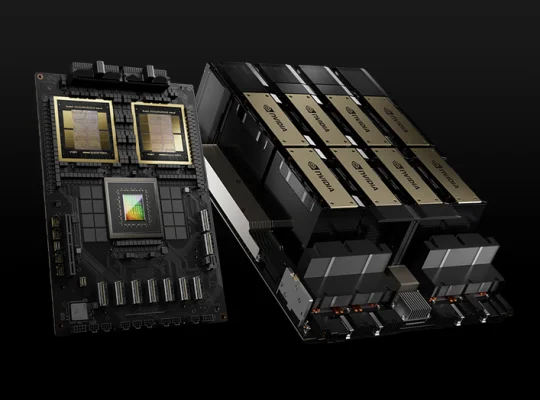Nvidia plays a pivotal and multifaceted role in boosting American semiconductor manufacturing, primarily by acting as a powerful catalyst for the entire ecosystem. While Nvidia is a fabless company—meaning it designs chips but doesn’t fabricate them in its own facilities—its massive demand and strategic partnerships are driving significant investment and development in U.S.-based production.
Here’s a breakdown of Nvidia’s role:
1. Driving Demand and Investment:
Massive Capital Commitments: Nvidia is one of the single largest drivers of demand for advanced chips, particularly for its AI GPUs. The company has announced plans to invest hundreds of billions of dollars into U.S.-based AI infrastructure over the next few years. This immense financial commitment isn’t just for its own facilities; it’s a direct signal to its manufacturing partners that there’s a reliable, long-term market in the U.S.
A “Customer of Choice”: As the market leader in AI chips, Nvidia’s business is highly sought after by semiconductor manufacturers. This gives Nvidia the leverage to influence its partners, like TSMC and Intel, to build or expand their advanced manufacturing capabilities in the United States. Without Nvidia’s orders, these foundries would have less incentive to make such large, multi-billion dollar investments.
2. Strategic Partnerships and Collaboration:
Partnering with TSMC: Nvidia has a long-standing and crucial partnership with Taiwan Semiconductor Manufacturing Company (TSMC), the world’s leading contract chipmaker. Nvidia’s demand for advanced chips is a key reason TSMC is investing tens of billions of dollars to build multiple new fabrication plants in Arizona. These facilities are designed to produce the cutting-edge chips that Nvidia needs, such as its Blackwell AI chips. This collaboration ensures that the U.S. will have a domestic source for the world’s most advanced semiconductor technology.
Utilizing Intel’s Foundry Services: While TSMC has been Nvidia’s primary manufacturing partner, Nvidia is also exploring and testing Intel’s advanced manufacturing processes. This is a significant development, as it opens up the possibility of a major customer for Intel’s new foundry business, helping to validate its domestic manufacturing push and compete with TSMC.
Building a Complete Ecosystem: Nvidia’s role extends beyond the initial fabrication. The company is also collaborating with other players in the supply chain, such as packaging and testing firms like Amkor and SPIL, to establish a complete AI manufacturing ecosystem in the U.S. This is crucial because a chip isn’t a final product until it’s packaged and tested. By bringing these steps to the U.S., Nvidia is helping to create a more resilient, end-to-end domestic supply chain.
3. Technological Innovation in Manufacturing:
cuLitho Software: Nvidia isn’t just a customer; it’s also a technological contributor to the manufacturing process itself. Its “cuLitho” software, which uses GPUs to accelerate the computationally intensive process of computational lithography, is being integrated into the workflows of its partners like TSMC. This innovation can dramatically reduce the time and power required to design and manufacture advanced chips, making U.S. factories more efficient and competitive.
4. Alignment with Government Policy:
Leveraging the CHIPS Act: Nvidia’s investments and partnerships align directly with the goals of the U.S. government’s CHIPS and Science Act. By moving production to the U.S., Nvidia and its partners can secure significant federal grants and tax credits, which further incentivize domestic manufacturing and help to offset the higher costs associated with building and operating plants in the United States.
In essence, Nvidia’s role is that of a powerful anchor tenant. Its insatiable demand for cutting-edge AI chips is the economic engine that is driving its partners to build the necessary infrastructure in the U.S. This, in turn, is creating jobs, fostering technological innovation, and strengthening the country’s position in the global semiconductor landscape.
















